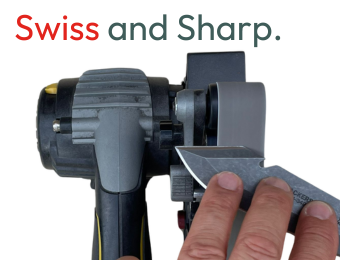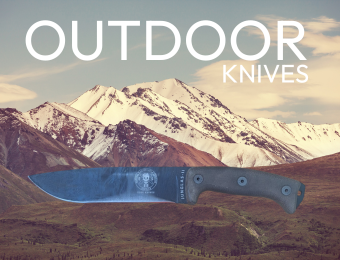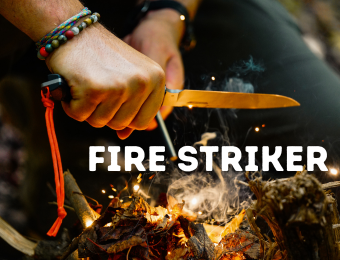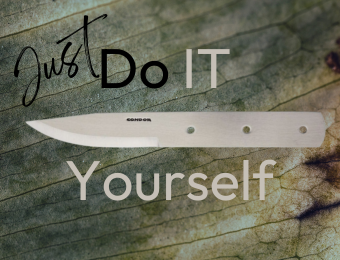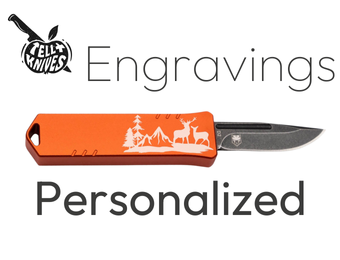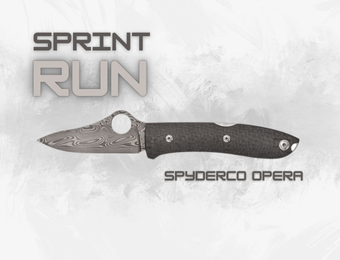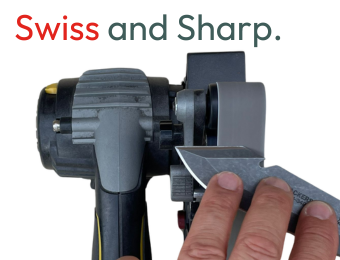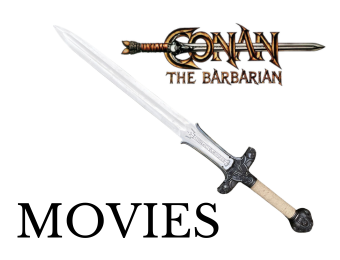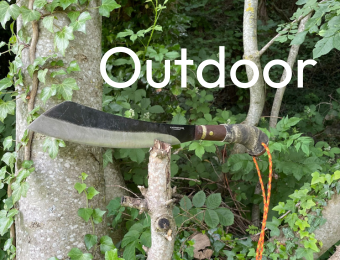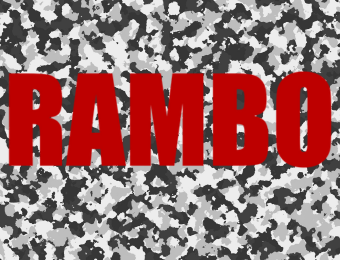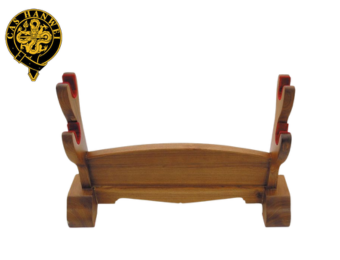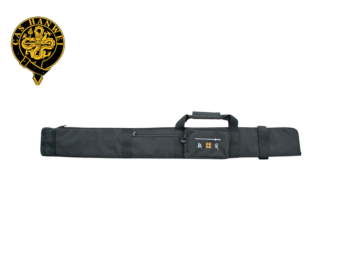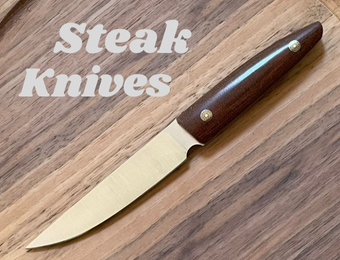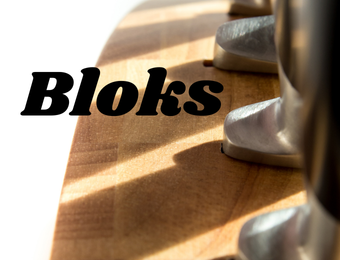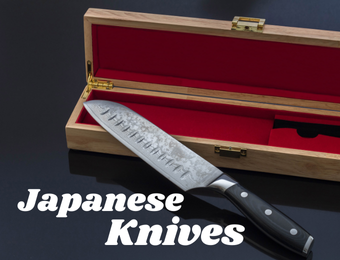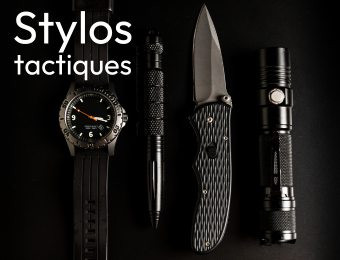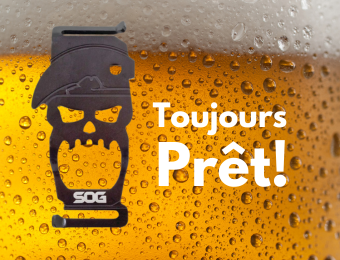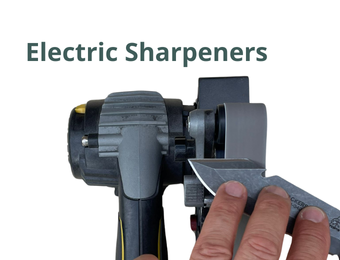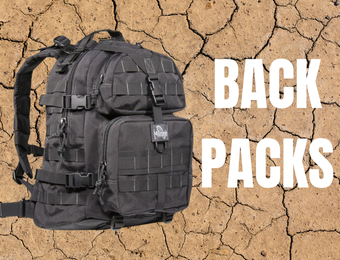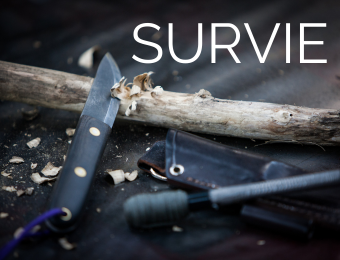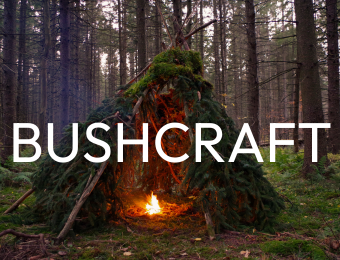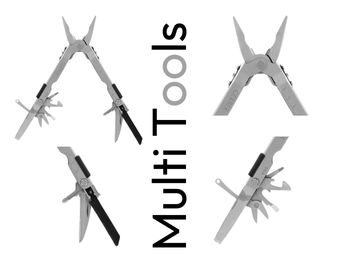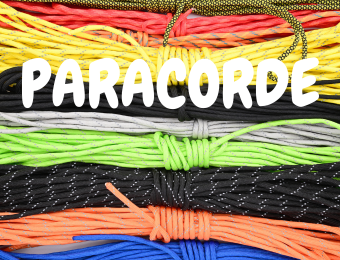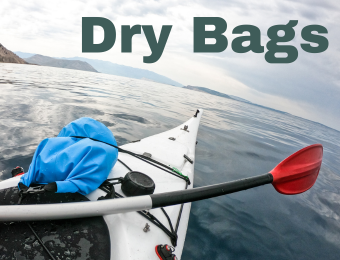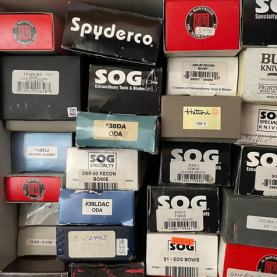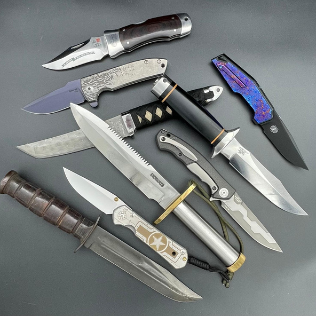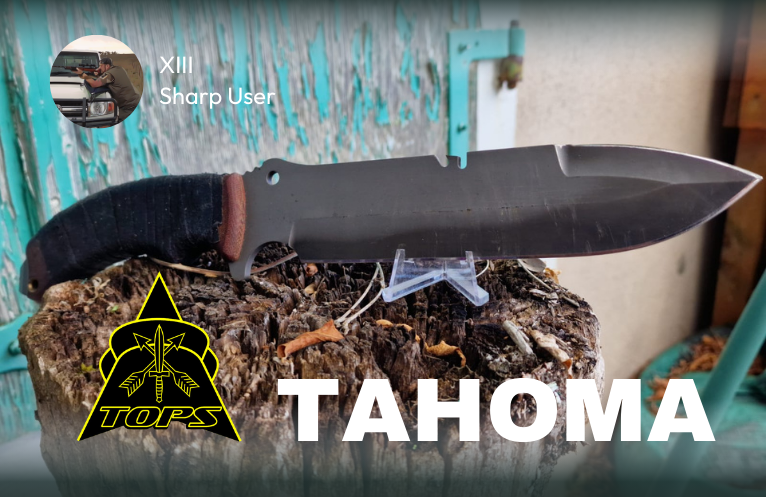General presentation of the knife:
Overall length: 35.5 cm
Blade height: 4.6 cm
Blade thickness: 4.7 mm
Blade length: 19 cm cutting edge + 2 cm finger choil
Handle length: 14.5 cm (1.5 cm large screwdriver at end of handle)
Handle material: Micarta
Weight: 520 g
Blade type: Drop-point smooth blade
Steel type: Carbon steel 1095HC black river wash finish / 58 HRC
Sheath: Nylon / soft compatible / pocket on front of sheath / plastic insert in sheath
Overview and specifications:
The TOPS Tahoma is a large, stationary survival knife with a number of practical features. The knife, for example, has a large finger rest that makes precision tasks much easier. The back of the tip features a second cutting edge that can be used when the main cutting edge is dull, but also allows materials to be pierced with ease. A little further along the back, you'll find a double cut with a sort of saw-like serration. This can be used to mark materials or to make an initial cut before starting to chop. It's also handy when you need to remove a saucepan from the heat. You can easily hook the lid onto one of the serrations. There's also a hole in the handle, so you can use it as a pommel to make a fire by friction.
Context of use:
I've been using this knife for several years, mainly as a camp knife, during my hunting, fishing, bivouac and forest outings. I use it to prepare fires, set up shelters and, above all, to prepare the shooting stand when hunting on the prowl. It lets me easily cut branches to clear the aiming zone, split and cut wood for the fire, and make sardines and stakes when setting up a shelter to sleep or eat.
I occasionally use the notch on the back of the blade to make a notch when making a sardine for my tarp, and to pick up my popote from the fire by the handle when it's hot. I like this knife because of its modularity. There are three ways to hold it:
1. close to the blade, using the finger choil for precise cuts,
2. normal grip for splitting wood and standard use,
3. at the end of the handle for on-the-fly cutting.
Its length and weight make it particularly effective in this last function. Given its size, in order to be able to prepare game (gutting and butchering) and have a knife for eating and for small tasks, in the case pocket I have a hunting opinel and a whetstone. For those who know what they're doing, there's a hole in the handle for making friction fires.
I carry it mainly on my bag (because of its large size), but it's very discreet once it's on my belt. Because of its carbon steel, it's easy to sharpen in the field, but don't forget to run a little edible oil over it from time to time to prevent it from oxidizing.
Positives:
Overall, I really like this knife for :
- its sturdiness
- its modularity of use
- the durability of the cutting edge, even after hard work
- blade thickness (not too thick) for precision cutting
- The micarta handle (solid and has a good grip)
- A finger choil large enough to keep your finger safe
- Simple, effective look, with no unnecessary frills
Negative points:
Points I don't like, as well as defects or improvements I'd like to see :
- The counter-edge on the back of the blade (useless for me and hinders beating)
- The screwdriver-like end of the handle (doesn't bother me when I'm using it, but I'd have preferred a flat end for crushing materials)
- That it doesn't exist in a smaller version, to make a combo with this one
Summary and evaluation:
I'd recommend this knife to anyone looking for a versatile, sturdy camp knife. But you'll need to accompany it with a smaller knife to be able to handle the smaller tasks.
I give it a rating of 4.5 out of 5.
-XIII-

